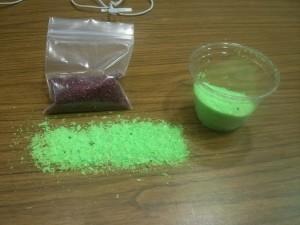The recycling of plastics and 3D printed objects is something that has garnered a ton of attention over the last year or two. With 3D printers becoming ever more popular, there are environmental consequences to the 
In order to recycle PLA filament, one must first grind the filament up into tiny pieces. Once done, that filament can be placed into a plastic extruder, melted, and turned back into 3d printer filament. The problem is it often takes a tremendous amount of work and energy to chop the plastic up fine enough, mostly due to the fact that the PLA plastics absorb energy, making them difficult to break down.
This is why University of British Columbia students, with the UBC Rapid engineering design team, have been working to find a better way to grind plastics. They have
PLA plastic has a brittle transition temperature that is under -20 to -40C. This means that at those temperatures, the plastic loses most if its energy absorbtion properties, basically allowing it to shater as blender blades hit it. Liquid nitrogen has a temperature far colder (-196C) than the brittle transition temperature required, making it ideal for cooling the plastic. What the team at UBC Rapid did was cool the plastic with the liquid nitrogen, strain the liquid out of the plastic, place the plastic into a Magic Bullet blender, and blend away. The results were quite remarkable, leaving the team with an almost powder like material after only a few minutes in the blender. The blended material can then be placed into an extruder and made into filament for your favorite 3D printer.
There are some caveats here though. It is not easy to just go pick up liquid nitrogen. This is where dry ice could come into play. Although the ice is not as cold as the nitrogen, it is still well below the temperature needed to eliminate the energy absorbtion properties of the plastic. The other caveat is that temperatures this cold will also cause metals, like the blender blades, to become more brittle, leading to broken blades in some cases. Either way this research may pave the way towards a more large scale PLA recycling project. Discuss this unique approach to the recycling of PLA filament at 3D Print Board.
